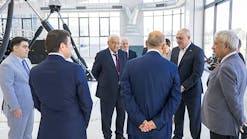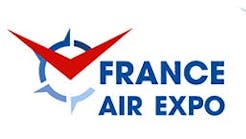Capitalizing on selected questions, used for discussion in an FAA Airworthiness Inspector’s Human Factors Workshop, Johnson helps you to be introspective as you reconsider your corporate safety culture.
The mere thought of another Ph.D. writing about “Safety Culture” could cause you to flip to the next article in this AMT magazine. Don’t do that! Try a couple more paragraphs.
Look for definitions of safety culture. There are many. The good news is that the definitions are redundant, containing the same words and concepts. Safety culture, like organizational culture, is founded on an organization’s shared beliefs, attitudes, values, and commitment regarding the importance of safety at every level of the organization. A strong safety culture requires unilateral knowledge and commitment. Every person in the organization should be able to express, with varying levels of detail, their personal commitment and job/task related contribution to worker safety and safe flight.
While definitions of safety culture are abundant safety culture is intangible. It is not an object or a written policy. An organization cannot “hold up and show” their safety culture. While intangible, an organization’s safety culture is manifested by employee attitude and behavior. It is visible based on how corporate leaders from every level of management demonstrate their understanding of culture and their commitment to safety. Demonstrated commitment can include training programs, voluntary reporting with a just culture, establishment of formal measures to identify and manage hazards, and sufficient equipment and procedures to enhance continuing worker and flight safety.
Aviation Safety Inspectors Consider Safety Culture During Human Factors Training
Regulatory compliance is one of many ways to ensure safety. A primary role of the FAA Airworthiness Aviation Inspector is to ensure that the regulated entity, any certificate holder, follows the rules. FAA’s Compliance Philosophy helps the ASI to work with you to ensure compliance. Of course, mere compliance does not guarantee a quality safety culture. Your FAA Inspector is not a safety culture assessor. However, an insightful ASI can work with you to help identify challenges and solutions before they evolve to a noncompliance or an undesirable event.
All FAA Airworthiness ASIs take a three-day maintenance human factors course. FAA is one of the few regulators that offer such a course for their workforce. This author sees the course as one of many demonstrated FAA Flight Standards management commitments to organizational safety culture. The mere existence and support of the three-day class shows that FAA management sees the importance of the maintenance human factors topics. The class is a tangible demonstration of safety culture.
The course covers the usual maintenance human factors fundamentals, like human error, communication, fitness for duty, failure to use technical procedures, event investigation, voluntary reporting, and more. The course is structured around the PEAR Model, standing for People, the Environment on which they work, the Actions that they perform, and the Resources necessary to complete the work. Yes, the Dirty Dozen is included.
There is considerable discussion throughout the course proceedings. Average aviation years of experience for this class are always greater than 25. Thus, experience and aviation wisdom ensures powerful story telling. One unit of the course considers safety culture by looking at demonstrated ways to consider an organization's commitment to safety (aka, safety culture). Here are a few sample ASI questions and expected company answers.
Voluntary Reporting Question
ASI Question: Show me the published written “Just Culture” policy and steps for voluntary reporting
Sample Excellent Corporate Answer: Here is the policy. It is part of our Aviation Safety Action Program, or a similar reporting method. It clearly explains the voluntary reporting process and how such reports are processed. It delineates a timely just culture decision-making process that protects workers who make mistakes. It makes it clear that blatant procedural noncompliance, reckless behavior, unfitness for duty, or falsification of records, and other actions are not protected by the policy and not immune from regulatory or corporate punitive action. This program has been instrumental in identification and management of hazards and risk before it becomes an undesirable event. To maximize the value of this voluntarily reported information we publish a quarterly newsletter of significant reports. In addition we use voluntary reports as discussion items for shift change and other safety meetings. We are working on a program to push this information to worker mobile phones.
Human Factors Training Question
ASI Question: Show me the course outlines for your maintenance human factors training
Sample Excellent Corporate Answer: We have three courses for maintenance human factors. One is a two-hour introduction for new hires. The second is an eight-hour course for all employees. That course includes about two to four hours of computer-based training of fundamentals. It is followed by a four-hour event investigation and discussion class, with an instructor. Our third class is the two-hour recurrent training which includes information from our voluntary reporting, other event-based reports, and any description of new practices/procedures. It is aligned with the EASA recurrent training requirements and takes place on a 24-month recurring basis.
All employees, managers, and executives must take the human factors training. Our instructors are usually promoted from the maintenance or maintenance training ranks. Usually they have a college degree and an Airframe and Powerplant Certificate but neither are firm requirements. All HF instructors must have taken a train-the-trainer class and some human factors training outside of our organization. We encourage our HF trainers to attend at least one human factors related meeting at least annually.
Shift Turnover Question
ASI Question: Show me your shift turnover practices/process
Sample Excellent Corporate Answer: Of course, the shift turnover question is somewhat dependent on the size and complexity of the shop/location. Our various departments match the turnover to meet their specific requirements. There is no one size fits all. In most cases we have designated lead mechanics who have the responsibility to document the status of jobs from one shift to another. They have the responsibility and are given sufficient shift overlap time to convey the status of all tasks that transfer from one shift to the next. If there are complex procedures in progress, the lead mechanic can ask personnel from the outgoing shift to stay on to ensure proper handover. There is a shift turnover office at the worksite where the meetings take place for every turnover. Job cards are used as the primary documentation for job status. We have documentation to ensure that all appropriate handover communications are clearly discussed and documented accordingly. Incoming workers are required to check the last task performed prior to the shift change. In our company the management and the workers recognize that shift change, or within shift task turnover, presents a hazard. We treat shift and task turnover very seriously.
Safety Culture Question
ASI Question: What evidence do you have to indicate that your company has a positive safety culture?
Sample Excellent Corporate Answer: You can ask any worker on this floor and you will get an answer to this question. We have had a lot of training about risk assessment. The training is backed up with newsletters, signage, and plenty of heart felt talk from company leadership. Every worker knows their particular jobs and can talk about how their job performance affects overall attention to worker and flight safety. We celebrate accident-free worker safety as much as we celebrate schedules and maintenance quality performance. When a worker sees or perceives a serious issue they are encouraged to report the potential hazard immediately. We have seen management rush to buy new equipment when workers identify potential safety risk. Voluntary reporting on safety-critical matters is always perceived as a positive step toward continuing safety in our departments and for the company at large. As workers we appreciate the quest for continuing safety. We get it!
Size Matters for a Safety Culture
The FAA Aviation Safety Inspectors human factors class includes inspectors from the airlines, larger repair stations, and small general aviation organizations. That diverse group of inspectors knows that one size safety culture does not fit all. Large organizations have multiple shops and locations to manage and there may even be a designated person to manage activities that foster culture. Small shops have fewer people and fewer resources to help cultivate the right culture. Size does matter but that is OK. As stated at the outset the key words include: shared beliefs, knowledge, values, and commitments where every person in the organization can express their personal commitment and demonstrated contribution to worker safety and safe flight. Got safety culture?






